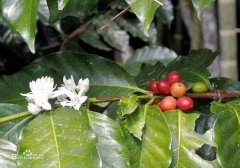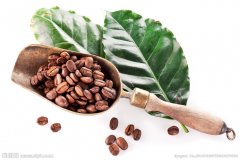How to select coffee beans and how to distinguish defective beans?
Is to learn to check the shelf life of coffee beans, coffee beans begin to oxidize after baking, just like aluminum powder, although the speed is not so fast, but the principle is still the same. And coffee beans have the characteristics of moisture absorption and flavor absorption, so try to buy fresh coffee beans, but for this habit of coffee beans, do not throw away coffee beans that have gone bad, as a desiccant and deodorant in refrigerator or wardrobe is a good choice, environmentally friendly and non-polluting.
That is, how to distinguish whether coffee beans can continue to be used or whether they go bad and have to be abandoned. Apart from looking at the color, what you should believe most here is your nose. Fresh coffee beans smell rich in the original fragrance of coffee, while coffee beans that are not fresh or have been over-oxidized will have a poor or basically no flavor, and serious coffee beans will have a musty smell. The smell of earthy and iodine may even have the taste of fermentation.
It is also the most essential point, press or taste it directly with your hand, because when you squeeze the coffee bean with your hand, the good coffee bean will not only give off the overflowing fragrance but also accompany the crisp crack sound when it cracks. further, you can put the coffee bean into your mouth and bite it open. If the sound of the crack is crisp and short, then it shows that the coffee bean is not wet. Another purpose of doing this is to see whether the internal color of the coffee bean is consistent with or close to the outside. The coffee with the same appearance is naturally roasted well and belongs to high-quality beans. If the coffee beans are different from each other inside and outside, it shows that the firepower is too fast or the heat is not well mastered when roasting, and the taste of such beans will be greatly affected when they are finally made into coffee.

Important Notice :
前街咖啡 FrontStreet Coffee has moved to new addredd:
FrontStreet Coffee Address: 315,Donghua East Road,GuangZhou
Tel:020 38364473
- Prev

The coffee grown in Papua New Guinea is mainly Indonesian Tibica sweet coffee.
Coffee grown in Papua New Guinea is mainly Indonesian Tibica, which is mainly grown in the east and west of Papua New Guinea. The coffee cultivation in Papua New Guinea is quite unique, and a method called coffee garden is often adopted here, and coffee farmers tend to plant coffee trees around their houses at will. The land of Papua New Guinea is very fertile, and the excellent climatic conditions allow
- Next

Java has a unique position in Indonesian coffee, Asian boutique coffee.
Java has a unique place in Indonesian coffee. Java coffee cultivation began as early as the Dutch colonial period, until the 1920s Java coffee is recognized as the world's best coffee, unique wet processing methods, as well as unique Java Tibica coffee, volcanic ash landform formed by IJEN volcano, excellent altitude of more than 4500 feet, long history.
Related
- Does Rose Summer choose Blue, Green or Red? Detailed explanation of Rose Summer Coffee plots and Classification in Panamanian Jade Manor
- What is the difference between the origin, producing area, processing plant, cooperative and manor of coffee beans?
- How fine does the espresso powder fit? how to grind the espresso?
- Sca coffee roasting degree color card coffee roasting degree 8 roasting color values what do you mean?
- The practice of lattes: how to make lattes at home
- Introduction to Indonesian Fine Coffee beans-- Java Coffee producing area of Indonesian Arabica Coffee
- How much will the flavor of light and medium roasted rose summer be expressed? What baking level is rose summer suitable for?
- Introduction to the characteristics of washing, sun-drying or wet-planing coffee commonly used in Mantenin, Indonesia
- Price characteristics of Arabica Coffee Bean Starbucks introduction to Manning Coffee Bean Taste producing area Variety Manor
- What is the authentic Yega flavor? What are the flavor characteristics of the really excellent Yejasuffi coffee beans?

